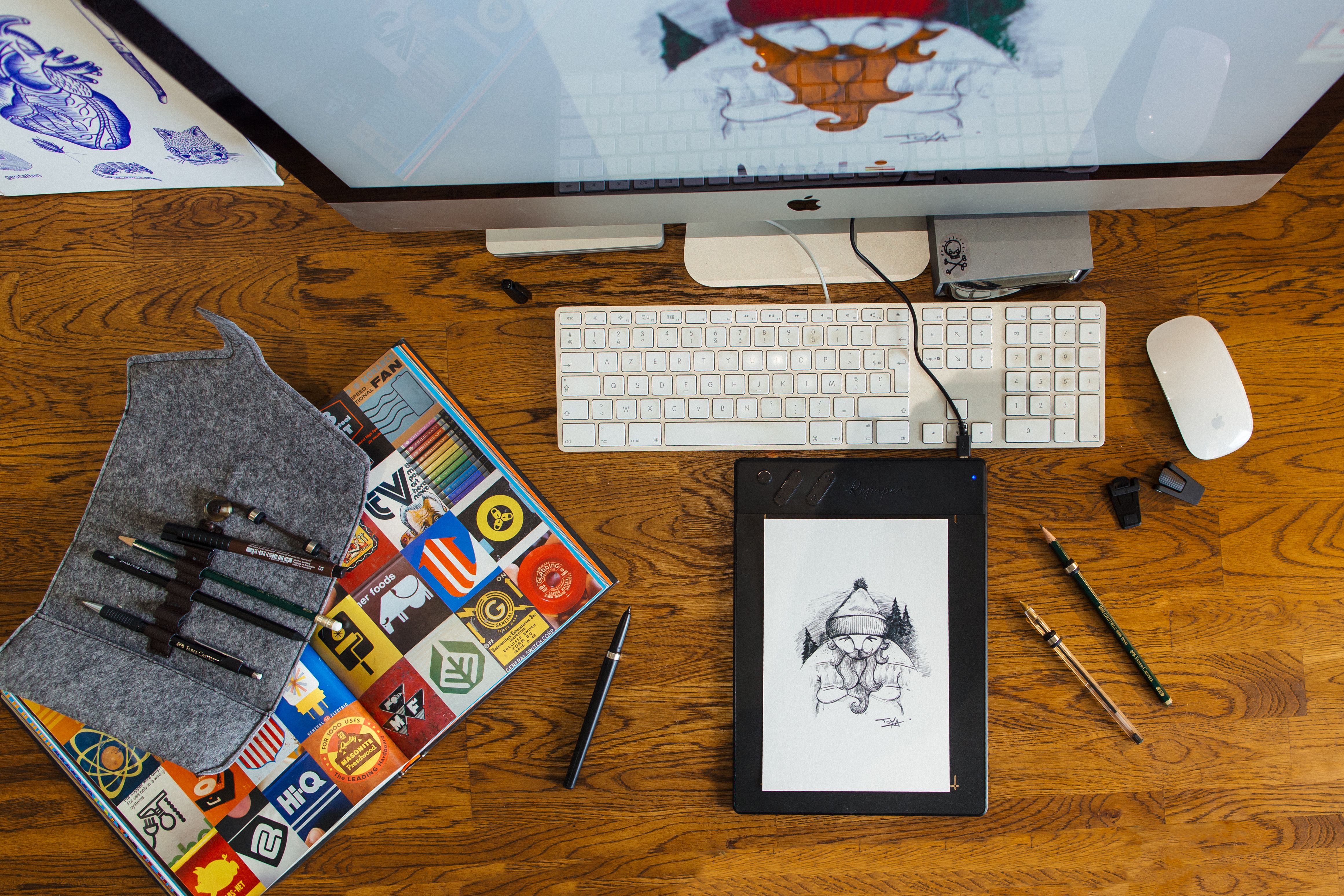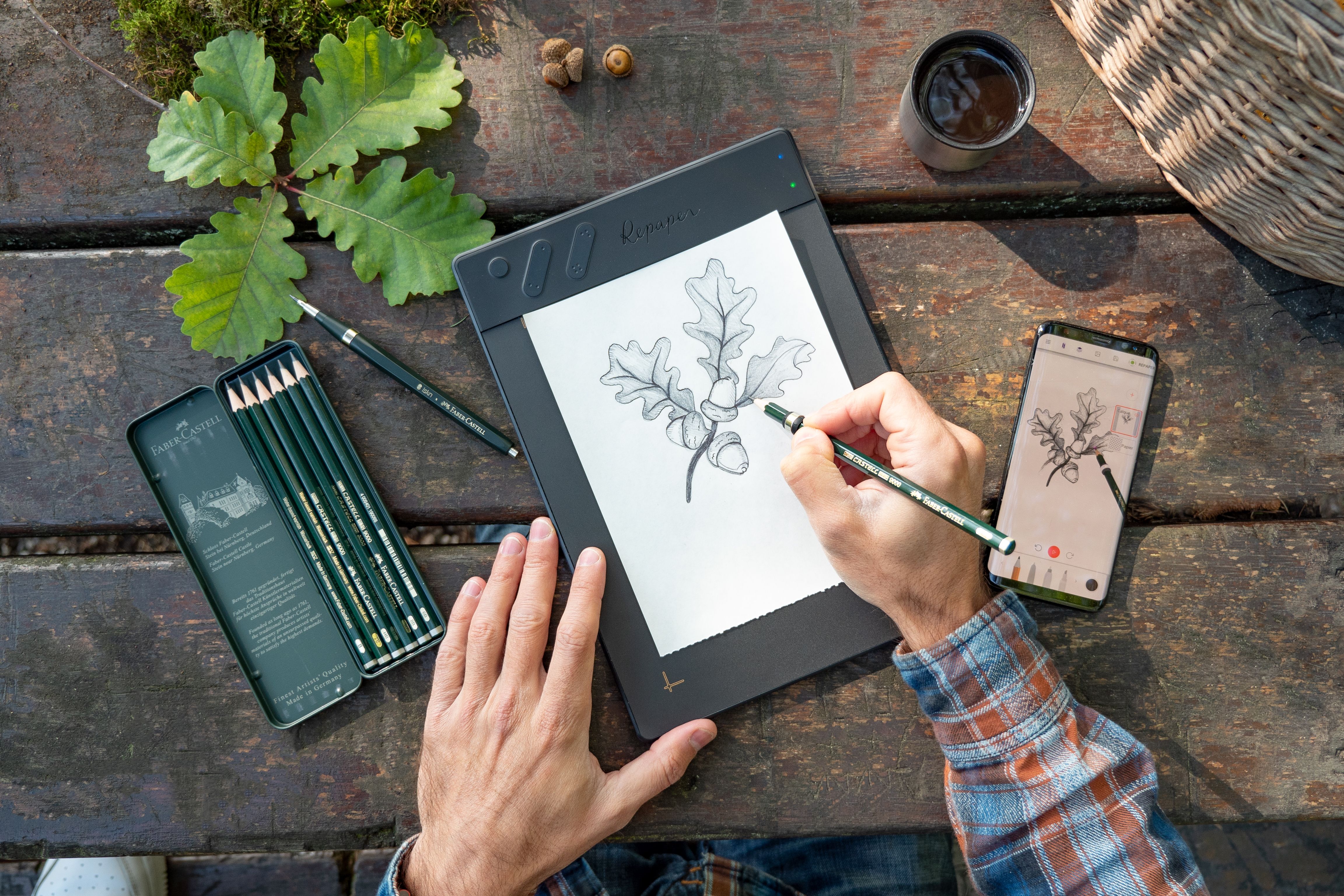
The main drawing techniques on paper
Drawing on paper is an elementary process for making drawings, practicing and learning to draw. But despite the apparent simplicity of the different techniques, every draftsman wishing to go a little further needs to acquire a knowledge of each particular material used and the resulting effects. What techniques should you use to start drawing on paper? Which tools to use? We provide you with the answers to understand.
Drawing on paper, an ancestral technique
In the history of the art of drawing, working with a pencil and a sheet of paper is a way of drawing that has always been used to learn the basics of drawing. Since the invention of paper, dry techniques have multiplied. If the lead pencil, ancestor of the graphite pencil, is used since the antiquity, they have known a considerable development since the Renaissance, with the scientists and the great painters who have widely used them to make their sketches, their drawing studies of the living, or portraits of celebrities of their time. Today, the multiplication of techniques, whether charcoal, pastel or simple graphite pencil, allows for a great diversity of renderings and effects, and mastering each of them, and why not mixing them together, can have amazing results, from learning to the most realistic works. Drawing with a pencil on a sheet of paper is intuitive, and requires a limited amount of equipment compared to painting, which can however be greatly enriched with time and experience.
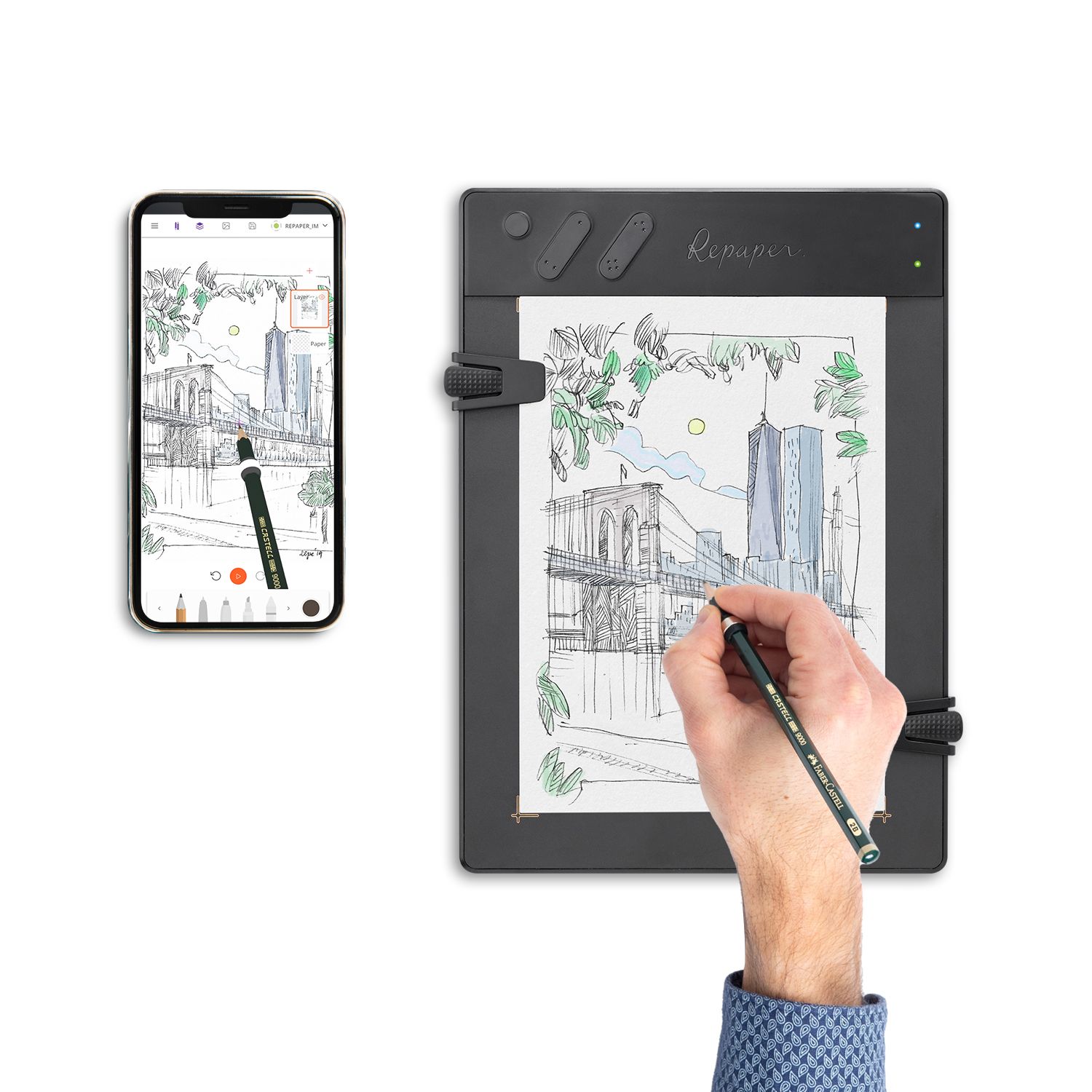
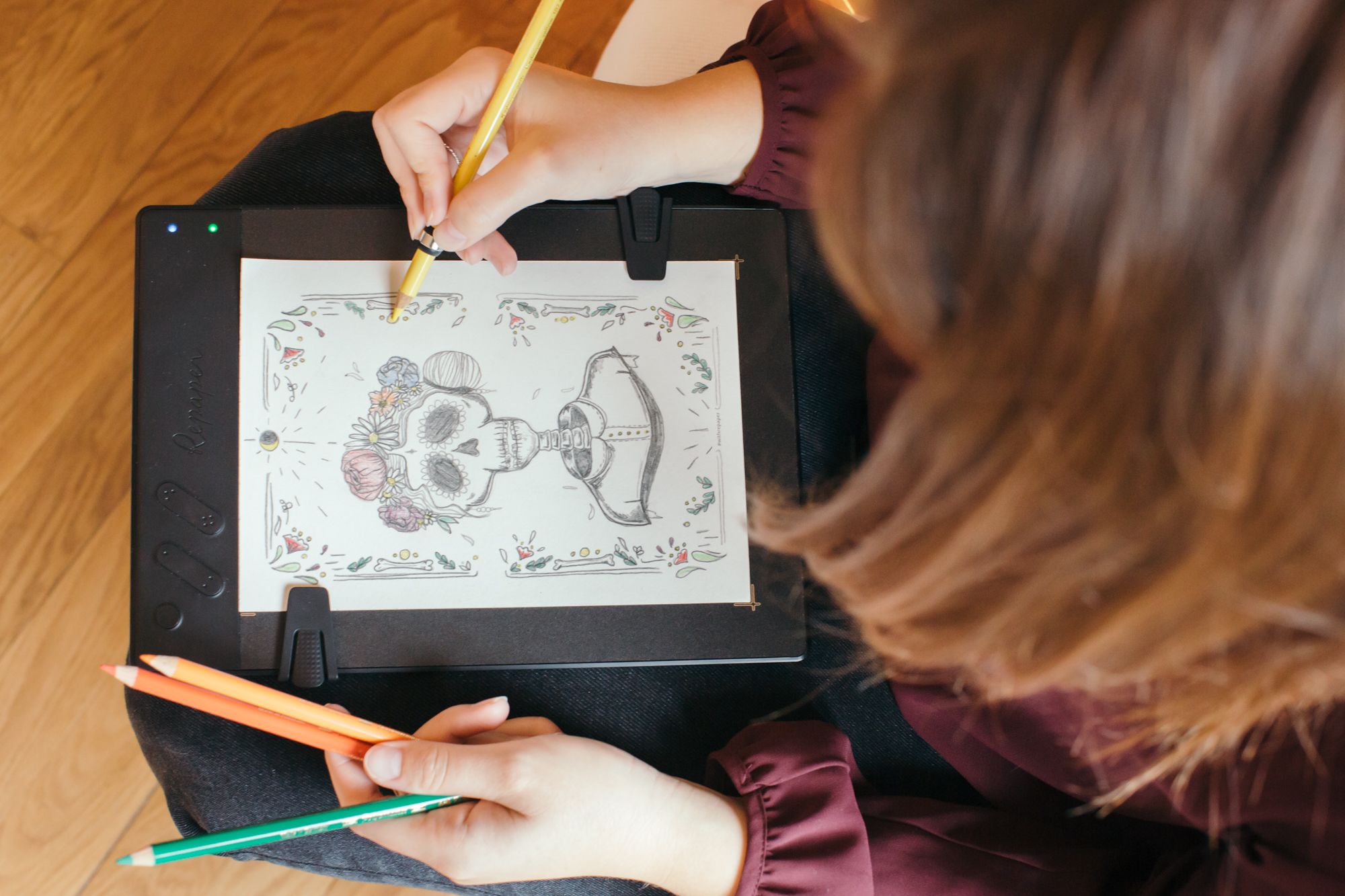
The main techniques of drawing on paper
The graphite pencil, the most common
When one speaks of drawing with a pencil, one speaks first of the graphite pencil. Versatile, it is perfect for recreational drawing, or for making sketches and adding contrasts. There is a whole range of pencils of this type, and your choice will depend on what you want to achieve. To select the right pencil, it is important to consider its hardness. The standard pencil, versatile, the most used in the practice of drawing, is the HB pencil. It provides the stroke that we all know, and it is the pencil that we generally refer to, depending on the region, as a "paper-pencil", "gray pencil" or "wood pencil". But many other types of graphite pencils exist, with very different tips. For black and white drawings, with dark and thick outlines, we will go for soft leads with type B pencils (the degree of softness going from B for the least soft of the range to 9B for the thickest and darkest). For those who prefer delicate lines, with much finer, clearer and more precise shades of gray, a hard lead pencil, from H to 9H, will allow you to achieve the details and light shadows that will give relief to your drawing. You will need a variety of such pencils for all styles of drawing.
Charcoal for learning
Charcoals have long been the basis of academic drawing, in order to learn to draw in drawing classes. This technique is still widely used at the École des Beaux-Arts, or in art workshops that offer drawing courses. It is indeed interesting to use charcoal to improve one's drawing skills, to learn how to draw a nature-morte or to reproduce a live model for example. Its structure, which fades easily, allows beginners to make sketches with interesting textures. You can use the charcoal in the form of a pencil, straight up, to get sharp outlines, and then turn to a charcoal stick, and use it horizontally, to get flat black for your filling. You can also use your finger or a breadcrumb eraser to blur your lines, make them more uniform, and create shadow effects. Charcoal, less precise than a graphite pencil, requires coarse paper due to its weak fixation (you can however apply a special lacquer to preserve your drawings over time), but it remains the perfect tool to learn the basics of drawing, thanks to its ideal characteristics.

Pastel for realistic drawings
Pastels are divided into two main families: dry pastels and oil pastels. The dry pastel allows to enhance drawings, giving soft textures from a graphite pencil portrait for example. It can be used to draw a realistic portrait (this is its main use) or to make landscapes. Even if it also requires a coarse paper for the texture to set, the pastel portrait differs greatly from the charcoal portrait by its realism. The greatest masters of this drawing art technique master color gradations in an optimal way. Dry pastel can be used by dabbing the pigments with a cotton or cloth and applying them directly to the drawing. It can also be more or less erased with a cutter over the drawing, then blurred with the finger or a cloth. The oil pastel is a very different technique. It will be preferable to use it by making a multitude of dots or small hatchings, by superimposing the layers little by little to obtain a gradient. This can give artistic effects close to impressionist paintings. It is also possible to spread the oil pastel and to mix the colors. But be careful, oil pastel is messy, and it can quickly give a "smeared" effect if your pencil is not regularly cleaned of impurities related to the mixing of colors, or if the order of layers, from the lightest to the darkest, is not respected.
Sanguine for study drawings
Sanguine, even if it has fallen into oblivion, is above all a pigment, of ochre color, before being a tool in particular. Often used during the Renaissance in the form of pencil, chalk and dry pastel, its color is ideal for highlighting volumes. It was thus used a lot for observation and technical drawing. We will find many works where artists have chosen sanguine to draw live models, draw animals, make multiple works around the golden ratio, or even for some portraits, the self-portrait of Leonardo da Vinci is the most famous example. Nude drawing and drawing of the human body are particularly well suited to the use of sanguine, in addition to black stone and white chalk, these three mixed techniques allowing the meaty side of the model to be brought out to perfection.
The black stone: a foretaste of the great paintings
In the history of art, the black stone was used for a long time during the Renaissance, to make sketches of the greatest paintings. Indeed, drawing and painting were two complementary activities for the painters of the time. If drawing with black stone is less precise than drawing with graphite pencil, this technique is nevertheless more detailed than drawing with charcoal. The great advantage of the black stone is that it can be used to blur the line, in order to obtain textures and shadows, while keeping the original line present on the drawing. It differs in this sense from pastel which will not keep any trace of the initial line after blending. More adherent than charcoal or pastel, the black stone is the ideal tool to give power to your drawings.

Color pencils for a multitude of finishes!
The color pencil is often imagined as dedicated to drawing for children and teenagers. This is not the case! Color pencils, in addition to being used by beginners who are learning to draw and color their works, also find their place in the applied arts and in storyboards for comics or manga drawings for example. Colored pencils are used to finish a drawing made a with graphite pencil, or for the more expert, to make a drawing from A to Z. If you want to start this practice, you will have to choose your equipment carefully, as colored pencils are almost indelible once they are put on paper. Colored pencils with an oil-based lead will be useful for details and hatching, while those with a wax base will be perfect for making your gradients. Watercolor paper with a satin grain is almost indispensable to obtain a result that is neither too grainy nor too messy. Think of the color pencil as a delicate technique that requires patience, and that requires to superimpose the layers in a regular way, without pressing too much, to obtain a satisfactory result. Some specialized solvents can also be of great help in order to achieve fades and uniformity of color.
What equipment should I use to draw on paper?
Paper: which one to choose?
The first thing to get when you want to draw is a paper surface adapted to the tools you want to use. It seems obvious that drawing and painting require different surfaces depending on whether you want to use a simple graphite pencil or draw with charcoal or pastel, or even paint with watercolor or acrylic. In the same way, a student who is just learning to draw and who needs to improve his or her skills will not have the same needs as a more experienced draftsman. Concerning the drawing, there are many different papers according to the needs. It will then be necessary to concentrate on 3 elements: the grain, the density and the PH. A fine grain, smooth like photo paper, will not be adapted to dry techniques, but more to wet techniques like ink or paint. In our situation, we will have to go towards a medium grain, like printer paper which can be used with a graphite pencil, or a coarse grain paper, that we all used during our art classes, with Canson paper for example, which will be necessary for techniques like charcoal, pastel or black stone. The thicker the paper, the more the texture will hold in place and the more depth it will have. In the same way, if the dry techniques adapt to all densities of paper, a low density paper (120g/m2) will certainly be sufficient for quick sketches with graphite pencil, but a sheet of 200g/m2 or more will be more adapted for more accomplished drawings. Finally, a paper with a neutral PH will keep your pencils' colors much better in the long term than a paper that has used acids in its making.

Sheets of paper or notebook?
Although beginners are used to work on separate sheets of paper, the use of a sketchbook will quickly become indispensable. Notebooks are ideal for sketching and training on the go. Their transportable format allows you to take them with you wherever you go. If the notebook is more adapted to practice and make small sketches, their large number on the market allows today to have access to any type of paper, allowing you to practice any technique, and the glued drawing pads even allow you to detach the sheets cleanly, as if you had drawn on a standalone sheet. As for the drawing sheets, because of their slightly larger format (usually A4 or A3, whereas a drawing book will mostly be A5), they are perfect for making more accomplished works intended to be kept.
Don't forget the accessories!
To draw well, you need to be well equipped! If you can opt for standard erasers to erase certain lines, the breadcrumb eraser will be the most adapted. Indeed, this one, allows not only to erase in a much more effective way the lines which you do not want any more, without leaving large dirty marks behind its passage, but also to blur by stamping the desired zone. Among other accessories, you can also invest in a drawing table, the equivalent of an easel for painting. This one allows you to be better organized, but especially better installed with its tilting board allowing you to draw more comfortably.
And what about digital?
If until now, drawing on paper was limited to traditional drawing, digital technology has made its debut by offering, like the Repaper graphic tablet by ISKN, hybrid drawing equipment, allowing the user to draw with a pencil of his or her choice and to make a sketch directly on a sheet of paper affixed to the surface of the graphic tablet. Thus, while drawing on paper, your strokes are instantly reproduced in Photoshop or in your favorite graphic software. This new type of drawing tablet is a revolution in the world of digital drawing, offering a solution for the beginner who practices on paper and is not comfortable with the particular hand-eye coordination required by graphic tablets without a screen (requiring him to look at the computer screen and not at his hand when drawing), as well as for the experienced artist who prefers the sensations of classical drawing, that you can't experience with a digital pen, to be able to sketch in the traditional way, with your favorite pencil, on which a magnetic ring transmitting the movements is installed, and to rework them on the computer, to color them, and why not to use the numerous tools of the graphic software to learn different techniques for painting and drawing. The big names in traditional drawing are not mistaken, with major brands entering the sector, such as Faber-Castell, which has partnered with ISKN for its Repaper hybrid graphics tablet.
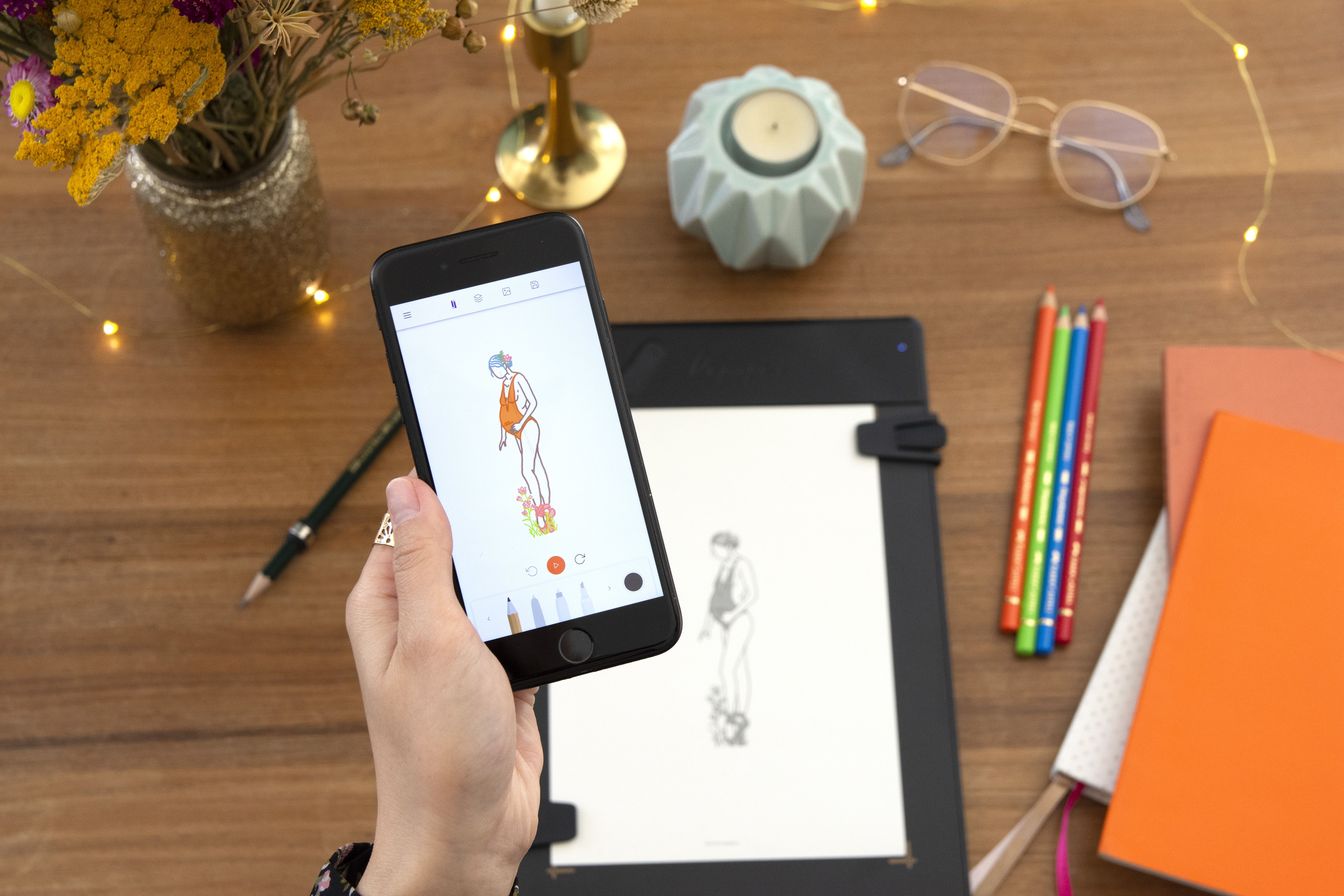
Conclusion
All dry drawing techniques on paper require a great deal of mastery and have different renderings. It will be necessary to know them well in order to use the right technique for what you want to achieve. The equipment will also be essential. Whether you draw with graphite pencils or pastels, you will need to have many pencils and tools in order to obtain all the desired effects and have a drawing that lives up to your expectations.

Discover more
The 5 best video editing software
Edit and produce your most beautiful videos with the most efficient software in the field!
How to Learn to Draw: Mastering Art through Practice
Learning to draw is a long process. Discover the tips to progress and learn drawing in a fun and motivating way!
Drawing on a computer: how to draw on a computer?
Thanks to the computer, it is now possible to draw without limits and without having to spend hundreds of euros in drawing materials consumed at a high pace.
Newsletter
Keep up to date with iskn news and events
Free standard delivery
for purchase over €80
30-day returns
on all products
Secure payment
with Stripe & PayPal
Pay in 3
with Alma
Customer service
chat with us


